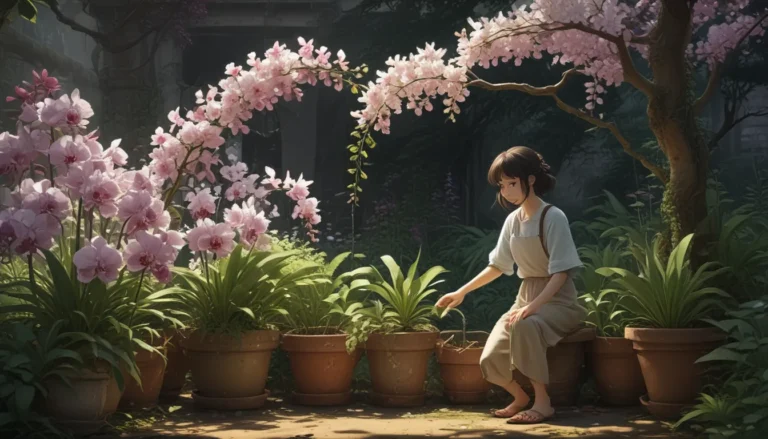Delving into the World of Bloodroot: Growing, Caring, and Understanding

Are you ready to add a touch of deadly elegance to your garden? Look no further than the bloodroot plant. With its toxic scarlet sap and captivating white flowers, Sanguinaria canadensis is a North American native that demands attention.
But beyond its striking appearance, bloodroot offers minimal maintenance and early spring blooms, making it a compelling choice for any garden. Are you ready to take the plunge into the world of bloodroot cultivation? Let’s arm you with the knowledge you need to succeed.
Unmasking the Mysteries of Bloodroot
Bloodroot, also known as puccoon and bloodwort, belongs to the poppy family and thrives in USDA Zones 3 to 8. This unique plant can be found in the eastern half of North America, spread from Canada to Florida. With its distinctive palmate leaves, white flowers, and red-orange rhizomes, bloodroot commands attention in any landscape.
The plant’s name, Sanguinaria, stems from the Latin “sanguis,” meaning “blood,” reflecting the plant’s crimson sap. This plant’s history is as rich as its appearance, with Native American tribes using it for dye-making, medicinal purposes, and even dental hygiene. Modern research continues to uncover the plant’s potential benefits, especially in cancer treatment.
A Word of Caution:
While bloodroot has a rich history of use, its toxicity cannot be overlooked. Skin irritation, nausea, and even heart failure are potential risks associated with this plant. For your safety and that of your pets, it’s best to admire bloodroot from a distance.
Nurturing Your Bloodroot: Propagation Techniques
Ready to grow bloodroot in your garden? You have several propagation options at your disposal: from seed, root divisions, or transplants. Whichever method you choose, remember to handle the plant with care and wear gloves to protect your skin.
From Seed:
Need seeds for your bloodroot garden? Harvest them ethically or acquire dried seeds from reputable sources. Plant them in well-draining and fertile soil in partial shade for successful germination.
Via Division:
Dividing mature bloodroot rhizomes is a reliable way to propagate this plant. Plant these divisions in similar soil conditions as seeds and maintain proper moisture for healthy growth.
Via Transplanting:
If you’re starting with potted bloodroot plants, ensure a smooth transition to your garden by following proper planting techniques. Gently transplant the rhizomes, maintain soil moisture, and protect your new additions with mulch.
Cultivating Bloodroot: Essential Growing Tips
To unlock the full potential of your bloodroot plants, follow these essential growing tips:
- Exposure: Partial to full shade is best for bloodroot.
- Protection: Shield your plants from wind to prevent damage.
- Watering: Keep soil moist, especially during dry periods.
It’s a moderate maintenance plant, but its striking appearance makes the effort worthwhile. Remember to wear gloves when handling your bloodroot and maintain a protective layer of mulch year-round.
Choosing the Right Cultivars
Consider opting for double-flowered cultivars like ‘Plena’ or ‘Multiplex’ for added beauty in your garden. These infertile varieties offer unique aesthetics and have won gardening accolades. When selecting cultivars, prioritize those cultivated from sustainable sources to protect wild populations.
Combatting Pests and Disease
Insects, mammals, and diseases pose potential risks to your bloodroot plants. Mitigate threats from deer, groundhogs, turkeys, and slugs by implementing appropriate deterrents and control methods. Remember to create a disease-free environment and sanitize your gardening tools to prevent fungal infections like Alternaria leaf blight and Botrytis gray mold.
Unleashing Bloodroot’s Full Potential
Leverage bloodroot’s colonizing abilities to create stunning woodland and shade gardens. Plant in mass to appreciate the full aesthetic impact of this early spring bloomer. Consider companion planting with other early-sprouting flowers for maximum visual appeal.
Quick Reference Guide to Growing Bloodroot
- Plant Type: Herbaceous flowering perennial
- Flower/Foliage Color: White or pink-tinged/pale green
- Native to: Eastern North America
- Hardiness (USDA Zone): 3-8
- Maintenance: Moderate
- Bloom Time: Spring
- Exposure: Partial shade to full shade
- Soil Type: Moist, fertile
- Soil pH: 5.5-6.5
- Attracts: Ants, bees, flies
Follow these quick tips to ensure your bloodroot thrives in your garden. Remember to appreciate the unique beauty and history of this plant as you watch it bloom in your landscape.
A Final Salute to Bloodroot
So, are you ready to embark on your bloodroot journey? Armed with valuable information and growing techniques, you’re well on your way to cultivating this striking plant in your garden. Remember to respect the plant’s toxic nature and enjoy its beauty from a safe distance.
For more gardening insights and early spring bloomers, explore our additional guides on daffodils, tulips, and other remarkable flowers. Share your thoughts and questions in the comments below – we’d love to hear from you!
By incorporating these educational sections, detailed growing tips, and cultivation advice, you can create an informative and engaging article that resonates with your audience. Remember to focus on valuable information, practical tips, and the unique aspects of bloodroot cultivation to make your content both educational and enjoyable for your readers.





